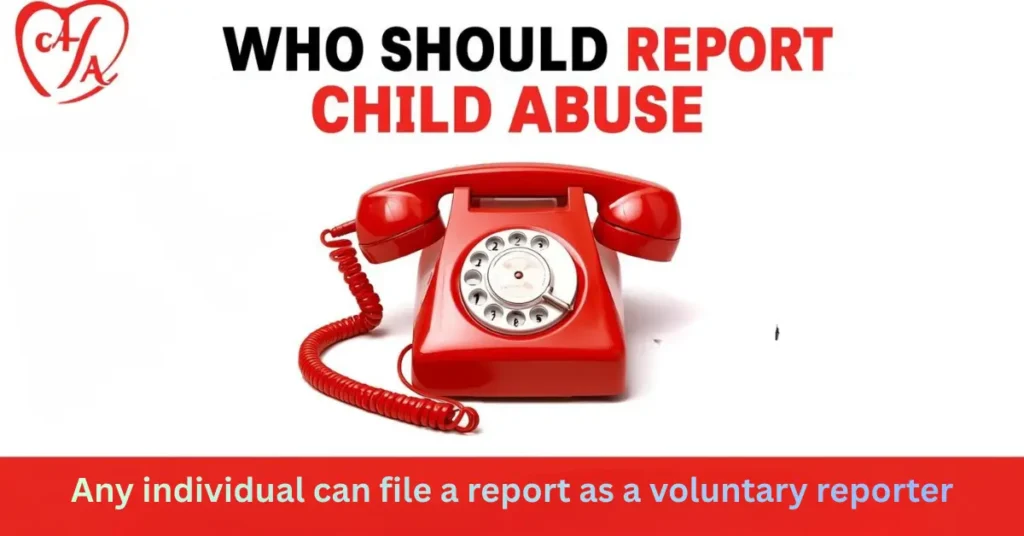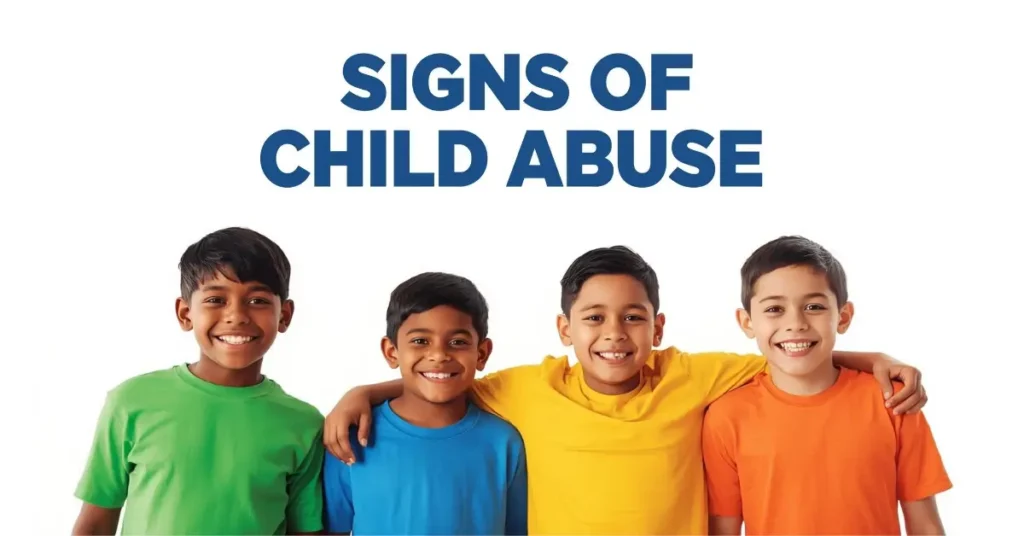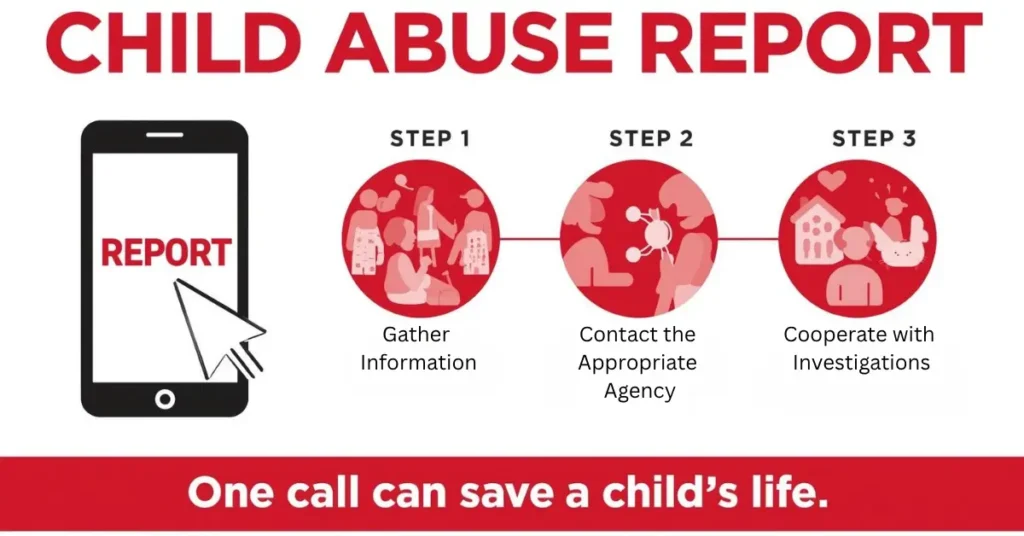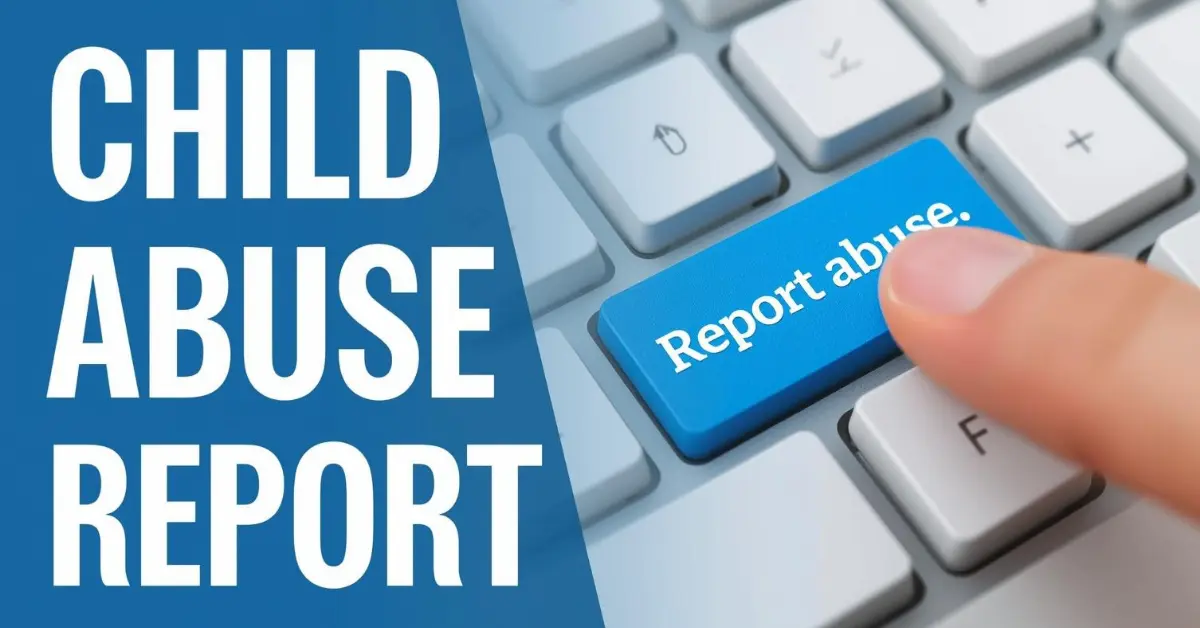Child abuse is a pressing concern in the United States, affecting countless children and leaving a lasting impact on families and communities. Defined as any action or inaction leading to harm or risk of harm to a child, child abuse can take various forms, including physical, emotional, and sexual abuse, as well as neglect.
Society has a collective responsibility to protect its most vulnerable members, and reporting child abuse plays a vital role in this effort. The legal framework for reporting child abuse in the USA varies by state but follows a unified goal of ensuring the safety and welfare of children.
Federal laws, such as the Child Abuse Prevention and Treatment Act (CAPTA), provide overarching guidelines, while state laws, like California’s Child Abuse and Neglect Reporting Act (CANRA), establish specific requirements for mandatory reporters and voluntary participants. Understanding these laws is essential for anyone who encounters suspected child abuse.

Who Should Report Child Abuse?
Certain individuals, referred to as mandatory reporters, are legally required to report suspected child abuse. These individuals typically include professionals like teachers, doctors, nurses, law enforcement officers, and childcare providers.
For instance, in California, Penal Code Section 11166 outlines the obligations of these professionals. Failure to report suspected abuse can lead to severe legal consequences, including fines and imprisonment.
To streamline the process, California offers an online Mandated Reporter Application, allowing mandatory reporters to file reports efficiently and securely. This tool ensures compliance with reporting laws while maintaining confidentiality.
In addition to mandatory reporters, any individual can file a report as a voluntary reporter. Under Good Samaritan laws, voluntary reporters are protected from legal retaliation when they act in good faith. This provision encourages members of the public to report without fear, fostering a culture of accountability and care.

Identifying Signs of Child Abuse
Recognizing the signs of child abuse is critical for timely intervention. Abuse can manifest in several forms:
- Physical Abuse
Unexplained injuries, bruises, burns, or fractures may indicate physical harm.
- Emotional Abuse
Excessive withdrawal, fear, or a child’s reluctance to communicate could signal emotional mistreatment.
- Sexual Abuse
A child exhibiting inappropriate sexual knowledge or behavior beyond their age level might be a victim of sexual abuse.
- Neglect
Signs of neglect include malnourishment, poor hygiene, and lack of access to necessities like food, clothing, and shelter.
The Child Welfare Information Gateway provides detailed guidelines to help individuals identify these signs. Understanding the categories of abuse helps in making informed decisions about filing a report.
Legal Framework for Reporting Child Abuse
Reporting child abuse involves navigating federal and state-specific laws designed to protect children and reporters alike. In California, the Child Abuse and Neglect Reporting Act (CANRA) requires individuals in specific roles to report suspected abuse immediately. This act aligns with CAPTA, a federal law that outlines confidentiality protections for reporters and mandates states to establish reporting systems.
One key provision of CAPTA is the protection of reporter identity, ensuring that individuals who file reports in good faith are shielded from legal repercussions. Similarly, state laws impose penalties on those who fail to comply with reporting requirements, emphasizing the importance of timely action. Legal immunity is granted to reporters acting in good faith, which serves as a safeguard against civil or criminal liability.

Steps to File a Child Abuse Report
Filing a child abuse report involves three critical steps:
Step 1: Gather Information
Before filing a report, collect as much information as possible about the suspected abuse. For example, the child’s name and address, as well as specifics regarding the nature of the abuse, are included here. While comprehensive information is helpful, reports can still be filed even if some details are missing.
Step 2: Contact the Appropriate Agency
There are multiple avenues to report child abuse. Nationally, individuals can call the Child Abuse Hotline at 1-800-4-A-CHILD (1-800-422-4453). For state-specific reporting, agencies like California’s Child Protective Services (CPS) and the San Diego County Child Abuse Hotline (1-800-344-6000) are available.
Mandatory reporters in California can also use online reporting tools, which streamline the process and ensure compliance with legal requirements.
Step 3: Cooperate with Investigations
After filing a report, the relevant agency may contact the reporter for additional information. To be of assistance to the investigation, complete cooperation is required. CPS typically conducts interviews, home visits, and other assessments to determine the validity of the report and the child’s safety.
Consequences of Not Reporting
Failing to report suspected child abuse, especially for those designated as mandatory reporters, carries significant legal and ethical consequences. Mandatory reporters include professionals such as teachers, healthcare providers, and law enforcement officers who, by virtue of their occupation, are legally required to report any suspicion of child abuse.
Under California law, specifically Penal Code Section 11166, mandatory reporters who fail to report suspected child abuse may face criminal charges, including fines and imprisonment. This statute underscores the state’s commitment to protecting children by imposing strict penalties on those who neglect their reporting duties.
Beyond legal repercussions, there are profound ethical implications. Neglecting to report abuse allows the perpetrator to continue harming the child, potentially leading to prolonged suffering or even death. Professionals entrusted with the care and safety of children have a moral obligation to act in the child’s best interest, and failing to report abuse is a breach of this duty.
Additionally, individuals may face civil liabilities. Victims or their families can file lawsuits against those who failed to report, seeking damages for the harm caused by the continued abuse. This legal avenue serves as a mechanism to hold individuals accountable for their inaction.
Protections for Reporters
Recognizing the importance of encouraging individuals to report suspected child abuse without fear of retaliation, both federal and state laws provide protections for reporters.
The Child Abuse Prevention and Treatment Act (CAPTA) is a federal law that offers immunity from civil and criminal liabilities to individuals who report suspected child abuse in good faith. This indicates that the reporter is shielded from legal ramifications so long as the report is made with the aim of being truthful. This is the case even if the allegations are later discovered to be baseless.
Similarly, California’s Penal Code Section 11172 provides immunity to mandated reporters from civil or criminal liability for reports made in good faith. This legal safeguard ensures that professionals can fulfill their reporting duties without fear of legal consequences.
However, it’s crucial to understand that these protections do not extend to false reporting. Individuals who knowingly file false reports can face legal consequences, including charges of misdemeanor or felony, depending on the severity and intent. This provision is designed to prevent the misuse of the reporting system and ensure that resources are directed toward genuine cases of abuse.
What Happens After Filing a Report?
Once a report of suspected child abuse is filed, Child Protective Services (CPS) takes several steps to investigate and address the situation.
Investigation Process: An investigation is launched by CPS in order to determine whether or not the report is accurate. This involves interviews with the child, family members, and other relevant individuals, as well as home visits to evaluate the child’s living conditions. Understanding how to identify child endangerment and know when to call CPS is crucial in these situations. The goal is to determine whether abuse has occurred and assess the risk of future harm.
Potential Outcomes: Depending on the findings, several outcomes are possible:
- In-Home Services
If the child is deemed safe to remain at home, CPS may provide services such as counseling, parenting classes, or substance abuse treatment to address underlying issues.
- Removal of the Child
If the child is in immediate danger, CPS may remove the child from the home and place them in foster care or with relatives.
- Legal Action
In cases where abuse is confirmed, legal action may be taken against the perpetrator, including criminal charges and court proceedings to terminate parental rights if necessary.
Confidentiality: To protect the reporter from any potential retaliation, the identity of the person who reported the incident is kept confidential. Additionally, details of the investigation are not disclosed to the public to safeguard the privacy of the child and family involved.
Resources for Further Help
For those seeking to report child abuse or in need of assistance, several resources are available:
- Local Child Protective Services (CPS) Offices
Complaints of child abuse are handled by a Child Protective Services agency that is assigned to each county. Generally speaking, the official website of the county is where one can locate necessary contact information.
- National Resources
The Childhelp National Child Abuse Hotline (1-800-4-A-CHILD) offers 24/7 support, providing crisis intervention, information, and referrals to local services.
- State-Specific Tools
Some states offer online reporting tools for mandated reporters, streamlining the process and ensuring timely responses.
Conclusion
Reporting child abuse is a critical responsibility that can save lives and prevent further harm. Understanding the legal obligations, protections, and processes involved empowers individuals to take action confidently. By remaining vigilant and informed, we can collectively safeguard the well-being of children and uphold the principles of justice and compassion.








